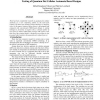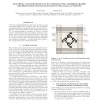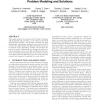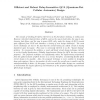11 search results - page 1 / 3 » PLAs in Quantum-dot Cellular Automata |
DATE
2004
IEEE
13 years 8 months ago
2004
IEEE
There has been considerable research on quantum dots cellular automata as a new computing scheme in the nano-scale regimes. The basic logic element of this technology is a majorit...
MSE
2005
IEEE
2005
IEEE
Teaching Nanotechnology by Introducing Crossbar-Based Architecture and Quantum-Dot Cellular Automata
13 years 10 months ago
The end of photolithography as the driver for Moore’s Law is predicted within seven to twelve years and six different emerging technologies (mostly nanoscale) are expected to r...
DAC
2004
ACM
14 years 5 months ago
2004
ACM
This paper presents the Quantum-Dot Cellular Automata (QCA) physical design problem, in the context of the VLSI physical design problem. The problem is divided into three subprobl...
DFT
2006
IEEE
13 years 8 months ago
2006
IEEE
The concept of clocking for QCA, referred to as the four-phase clocking, is widely used. However, inherited characteristics of QCA, such as the way to hold state, the way to synch...
GLVLSI
1999
IEEE
13 years 9 months ago
1999
IEEE
Despite the seemingly endless upwards spiral of modern VLSI technology, many experts are predicting a hard wall for CMOS in about a decade. Given this, researchers continue to loo...




